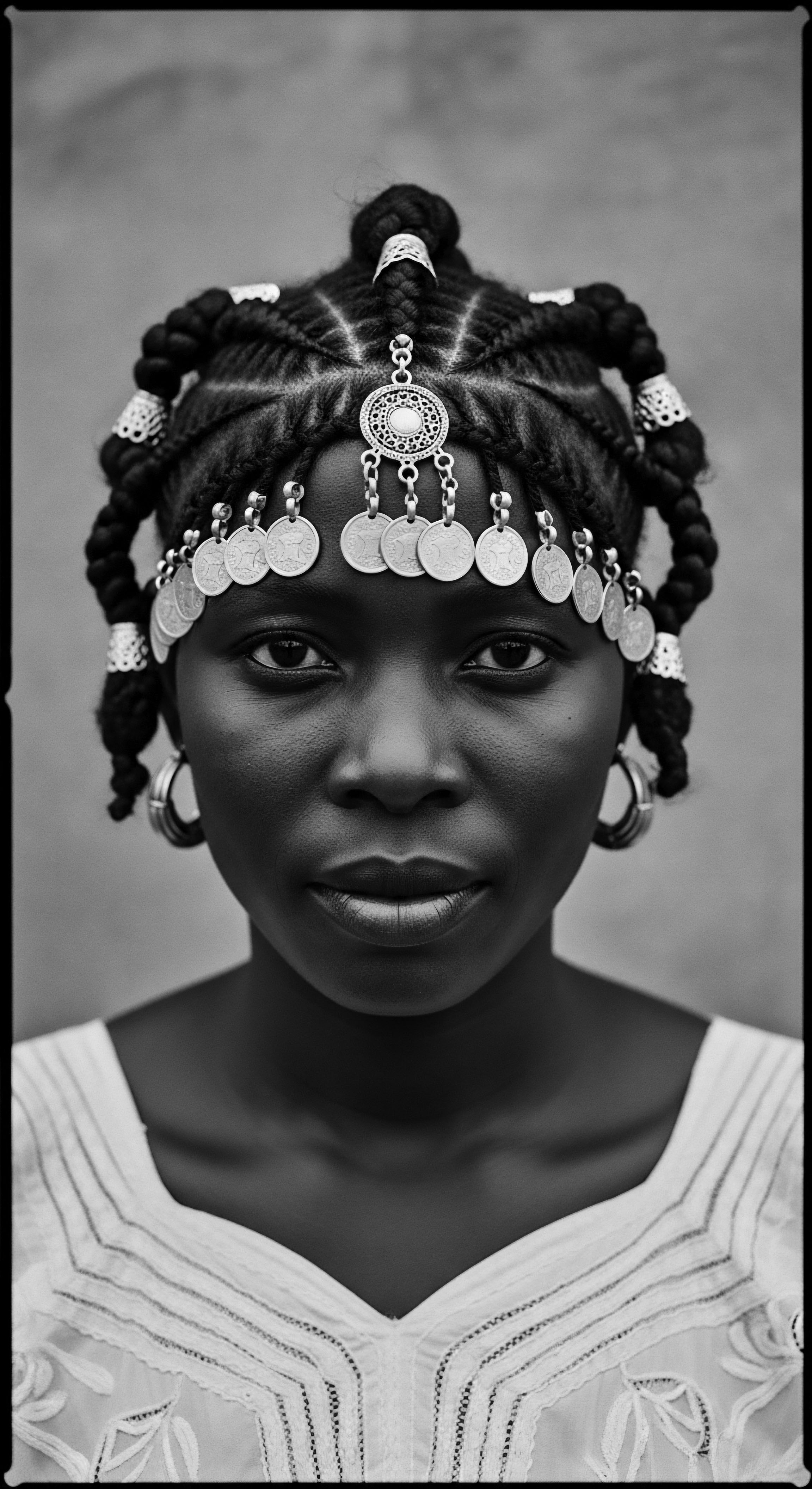
Roots
To journey into the heart of textured hair is to trace the very currents of time, to feel the echoes of ancestral wisdom stir within each coil, each strand. For those whose crowns carry the undeniable mark of heritage—the spiraling beauty, the resilient strength, the profound depth of form—hair is far from a mere adornment. It stands as a living chronicle, a vibrant archive etched with stories of resilience, identity, and profound cultural memory.
What pulses within the very fiber of a strand is a connection to millennia of human experience, a testament to creativity that has shaped communities and guided individual lives. We embark on a thoughtful exploration, allowing the spirit of textured hair’s lineage to guide us, revealing how customs from distant pasts truly contribute to present-day cultural pride for hair of African descent.

Hair’s Earliest Expressions
Consider the ancient civilizations that understood hair as a language, a complex system conveying status, lineage, and spiritual devotion. Long before written records captured the full breadth of human experience, hair spoke volumes. In various pre-colonial African societies, hair became a canvas for artistry, a visual declaration of belonging. The patterns woven into strands, the ornaments delicately placed, often signaled a person’s age, their marital standing, their tribal affiliation, or their role within the community.
For the Yoruba People of Nigeria, intricate hairstyles were not just aesthetic choices; they carried profound meaning, signifying communal roles and connecting individuals to deities. Skilled artisans, revered within their societies, would dedicate hours to these precise creations, recognizing the spiritual energy concentrated at the crown.
Hair, across various ancient African societies, served as a powerful, unspoken language, revealing identity, social standing, and spiritual connection.
The Himba tribe in Namibia, for instance, wore dreadlocked styles coated with a distinctive mixture of red ochre paste, butter, and goat hair. This practice held a spiritual weight, symbolizing their bond with the earth and their ancestors. Such customs underscore how the physical manipulation of hair was intertwined with deeply held beliefs, elevating grooming beyond simple hygiene to a sacred ritual.
This tangible link to the land, to the spirit world, and to one’s community provided a foundational understanding of hair’s purpose, far removed from fleeting trends. These deep-rooted practices, passed through generations, cultivated an enduring appreciation for hair as a sacred aspect of self, a vessel of collective memory.
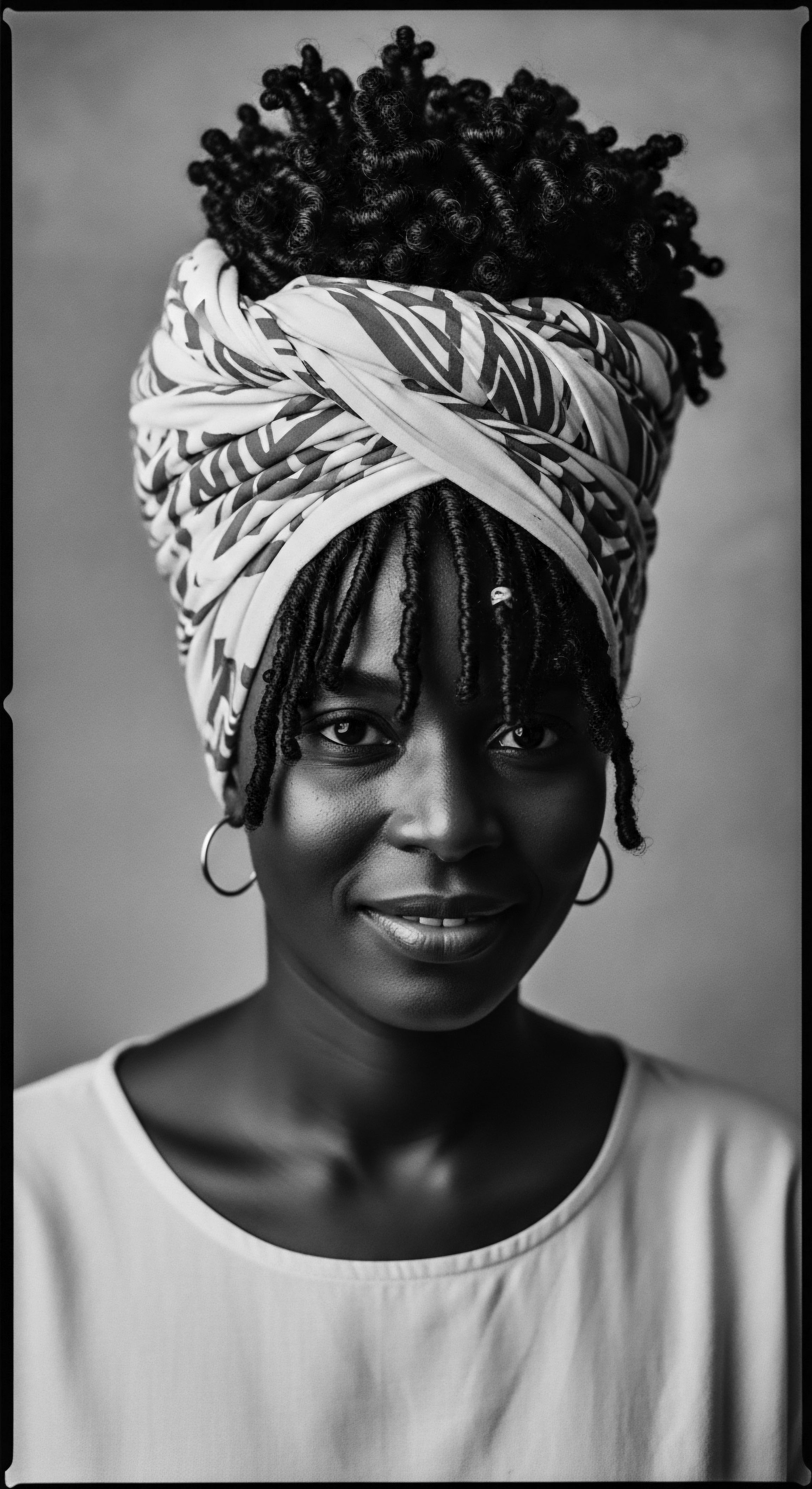
Decoding Hair’s Structure from the Past
Even without the sophisticated tools of modern science, ancestral practitioners understood hair’s unique qualities. They observed its remarkable ability to insulate against both heat and cold, its capacity to hold moisture when treated with natural oils and butters, and its varied coiling patterns. This intuitive, observational science guided their care practices.
Modern understanding now clarifies the biological underpinnings ❉ textured hair—often characterized by its elliptical cross-section and the presence of a single, asymmetrical medulla—spirals as it grows, creating its distinct coils and kinks. This geometry allows for the extraordinary volume and versatile styling capacity unique to textured hair.
The classifications we use today, like types 3A to 4C, represent a contemporary attempt to categorize this diversity, often building upon a history where understanding was more qualitative and descriptive. Traditional terms, often localized to specific ethnic groups, reflected a nuanced recognition of hair’s texture, density, and behavior under various conditions. These indigenous lexicons often carry a reverence for the hair’s inherent nature, a contrast to later, imposed terminologies that sometimes devalued natural hair.

What Were the Earliest Hair Lexicons?
Across different African cultures, descriptive terms for hair and its styles abounded. These were not merely labels but often carried cultural weight, reflecting the artistry and meaning attached to each form.
- Irun Kiko ❉ A Yoruba term describing a form of thread-wrapping, recognized for its visual artistry and connections to femininity and rites of passage.
- Mushat Plaits ❉ Adorned by young girls in Sudan, these plaits symbolized the precious time spent with matriarchs, underscoring the enduring role of women in preserving culture through hair traditions.
- Otjize ❉ The Himba term for the red ochre, fat, and herb mixture used to coat their characteristic dreadlocks, a practice that highlights their deep connection to their environment and ancestry.
These examples reveal how hair was understood not as a static entity, but as a dynamic medium for cultural expression, a living artifact of heritage. The language used to describe hair mirrored the intricate social structures and spiritual beliefs of these societies.

Hair Growth Cycles and Ancient Influences
Hair’s life cycle—anagen (growth), catagen (transition), and telogen (rest)—is a universal biological process. Yet, historical environmental and nutritional factors undoubtedly shaped the physical characteristics of hair and the practices surrounding its care. Diets rich in nutrient-dense plant foods, healthy fats, and proteins, prevalent in many ancestral African communities, would have supported robust hair growth and scalp health.
The use of natural oils, plant extracts, and clays served not only as styling agents but also as treatments to moisturize, cleanse, and protect the scalp and strands from environmental elements. This holistic approach, where diet, environment, and external care worked in concert, allowed textured hair to flourish, defying the later, imposed narratives of its unruliness.
The legacy of these customs means that present-day pride in textured hair is not merely an aesthetic choice; it represents a profound reclamation of heritage, a conscious return to practices that acknowledge and honor the hair’s inherent qualities, guided by ancestral wisdom. It is a quiet affirmation of the belief that what springs from our roots carries an enduring beauty and strength, a beauty long recognized in its homelands.

Ritual
The transformation of hair, through practiced hand and purpose-built tool, represents a profound connection to generations past. Each braid laid, each twist coiled, each adornment placed, echoes the gestures of those who came before. These acts are not merely about aesthetics; they are living rituals, threads in a continuous dialogue with a rich cultural lineage. Understanding how traditional and modern styling practices connect to heritage reveals a vibrant continuity, a journey from necessity to celebrated expression.
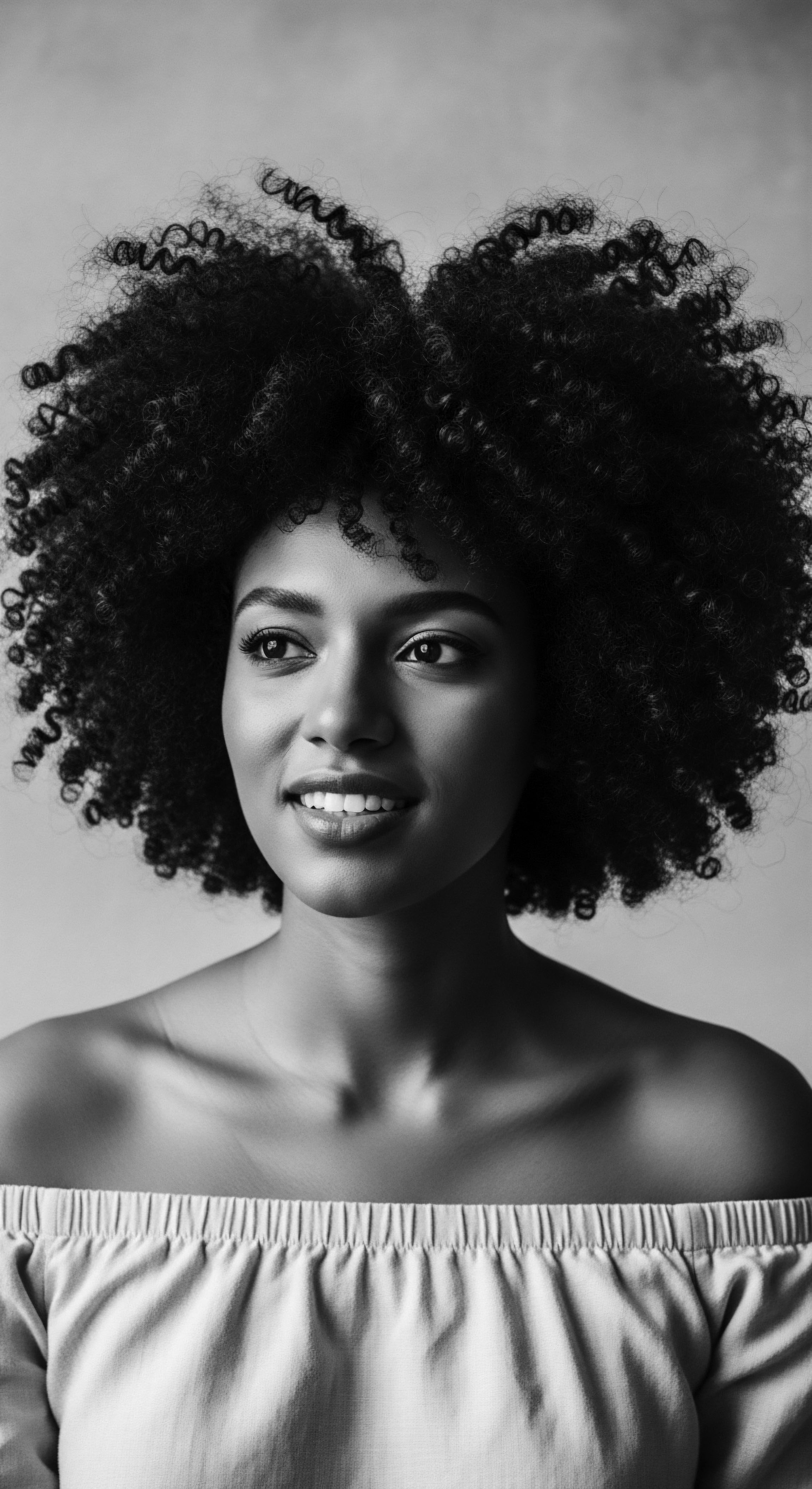
Ancestral Styling Techniques and Their Significance
Across the African continent, a kaleidoscope of styling techniques emerged, each with its own history and meaning. Braiding, for instance, traces back at least 5,000 years to 3500 BC, with archaeological evidence from ancient Egypt showcasing elaborate braids. Cornrows, particularly, served as a complex system of communication and identity, with patterns often indicating a person’s tribe, social status, or even their marital standing. During the transatlantic slave trade, these intricate braiding practices became tools of survival and resistance.
Enslaved African women, rice farmers by tradition, braided precious rice seeds into their hair before being forcibly transported to the Americas, ensuring the survival of essential crops and a piece of their homeland. Other cornrow patterns, it is said, even mapped escape routes to freedom.
Styling textured hair historically transcended beauty, serving as vital communication, a marker of identity, and an expression of defiance during periods of adversity.
The Fulani Braids, originating from the Fulani people across West Africa, traditionally involved five long braids, often adorned with silver or gold coins, beads, or cowrie shells, symbolizing wealth, status, or marital state. These styles were not static; they were dynamic expressions, adapting to life events, social roles, and even communal messages. The act of braiding itself was a communal experience, a time for women to gather, share stories, gossip, and offer advice, reinforcing community bonds and passing down cultural knowledge across generations. This shared ritual fostered a sense of belonging and collective resilience, particularly important amidst separation and oppression.

How Do Traditional Tools Inform Modern Styling?
The tools used for hair styling also possess a deep lineage. Before the advent of modern implements, ingenuity guided the crafting of combs, picks, and adornments from natural materials like wood, bone, and ivory. These early tools were often exquisitely carved, sometimes carrying symbolic motifs.
While precise historical records on some specific tools are scarce, we understand that hands, fingers, and various found objects served as primary instruments for coiling, twisting, and sectioning hair. The significance of these traditional tools lies in their intimate connection to the hair itself—they were extensions of the stylist’s hands, allowing for meticulous work that respected the hair’s natural growth pattern and texture.
The transition to modern tools, such as wider-tooth combs and specialized brushes, reflects an adaptation to contemporary life while maintaining the principles of gentle manipulation and defined styling that ancestral practices championed. Even the modern hot comb, which became popular in the early 20th century, has its roots in earlier attempts to straighten textured hair, dating back to the slavery period when hot irons were used. The evolution of these tools tells a story of both continuous innovation and the enduring desire to shape and care for textured hair, often against prevailing Eurocentric beauty standards.
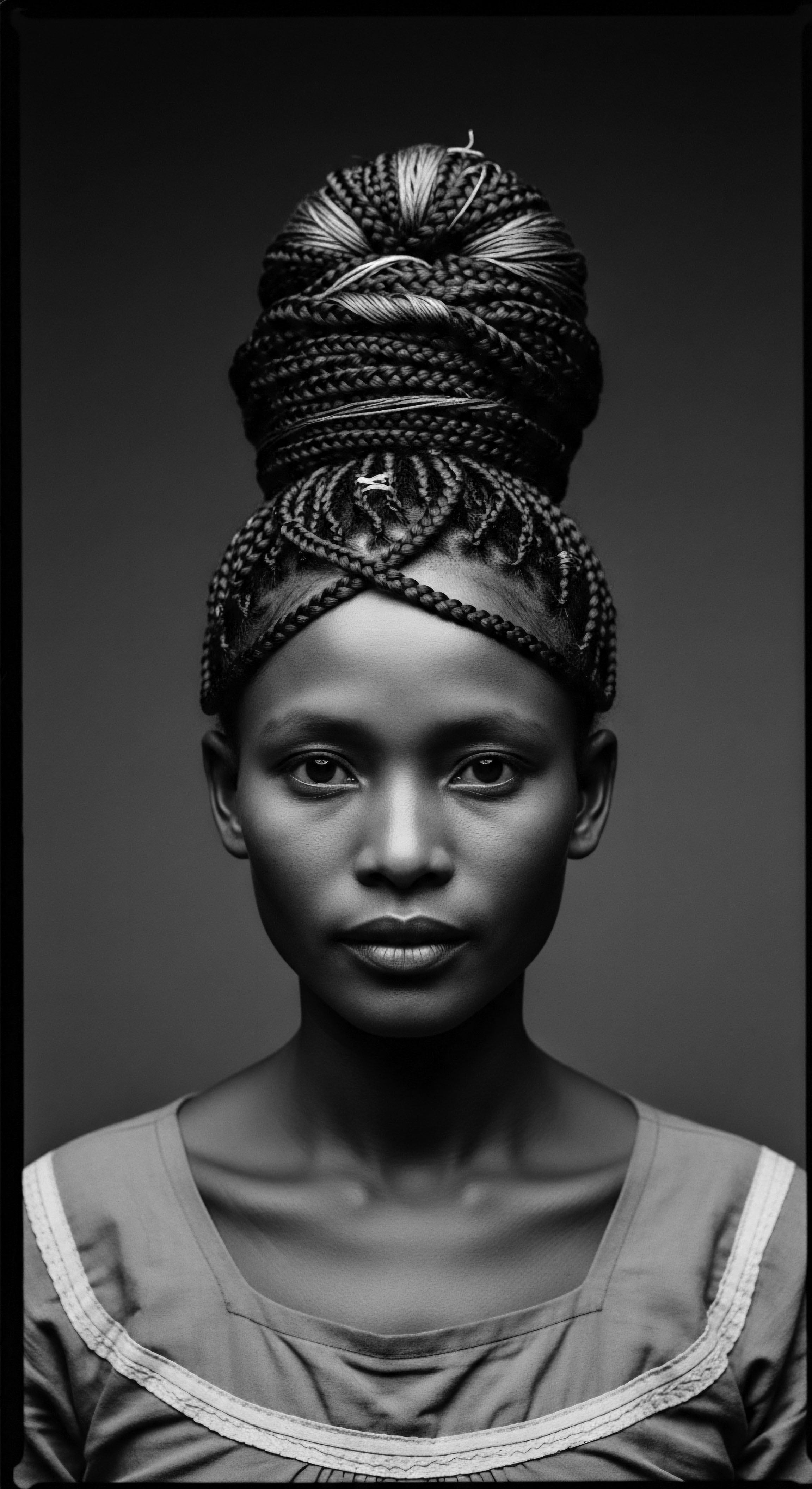
The Art of Hair Adornment and Its Historical Roots
Adornments, too, hold centuries of history. From the intricate beadwork discovered at ancient sites like Kerma in Sudan to the gold and precious materials used to embellish wigs in ancient Egypt, hair was a canvas for displaying wealth, religious devotion, and connection to the divine. Ancient Egyptian royalty and elite often wore elaborate wigs, skillfully made from human hair, wool, or plant fibers, often intricately braided and adorned. These wigs were not merely decorative; they signaled high rank in a well-defined social hierarchy and served practical purposes, shielding shaven heads from the sun and promoting hygiene.
| Ancient Practice Cornrowing |
| Cultural Significance Mapping escape routes during slavery; denoting tribal identity |
| Modern Parallel/Influence Protective style; fashion statement; symbol of cultural pride and connection to ancestry. |
| Ancient Practice Ochre-coated Locs (Himba) |
| Cultural Significance Connection to earth and ancestors; age, life stage, marital status |
| Modern Parallel/Influence Embrace of natural texture; spiritual practice; artistic expression. |
| Ancient Practice Wig Adornment (Ancient Egypt) |
| Cultural Significance Symbol of wealth, status, divinity; hygiene |
| Modern Parallel/Influence Fashion accessory; protective styling; addressing hair loss; reclaiming luxury. |
| Ancient Practice The ingenuity of ancestral styling practices continues to shape how textured hair is worn and celebrated today, bridging historical utility with modern self-expression. |
The use of headwraps and turbans, while sometimes a mandated form of oppression during slavery to hide natural hair, also has roots in West African traditions where head coverings were used for protection, hygiene, and as a display of social status and spiritual significance. Today, the bonnet, a simple yet powerful accessory for nighttime protection, embodies this historical continuity, safeguarding delicate strands and preserving intricate styles. This item, seemingly modern, carries the echoes of countless generations who understood the need to shield and maintain their hair’s integrity.

How Do Protective Styles Reflect Cultural Lineage?
Protective styles—braids, twists, locs, and their many variations—are more than just a means to minimize manipulation and promote length retention. They are a tangible link to ancestral ingenuity, born from necessity and refined into artistry. Their historical roots are deeply embedded in the social structures and survival strategies of African communities, both on the continent and throughout the diaspora. These styles offered a way to keep hair neat, manageable, and protected during labor, travel, or spiritual ceremonies.
The resurgence of these styles in modern times represents a powerful act of cultural reclamation. A study in 2011 and 2016 noted a significant shift, with spending on perm relaxers falling 30.8 percent between 2011 and 2016, indicating a growing preference for natural hair. This contemporary movement, spurred by social media platforms and a renewed cultural consciousness, has allowed many to abandon chemical alterations and embrace their innate textures. This embrace of protective styles is a visual testament to a living heritage, a celebration of innate beauty that defies imposed standards, asserting pride in one’s lineage.

Relay
The continuum of care for textured hair extends beyond its inherent structure and outward styling; it delves into the realm of holistic wellness, ancestral wisdom, and the perennial dance with challenges. This ongoing conversation between past practices and present understanding forms the essence of a radiant hair journey, a legacy passed forward. How does the legacy of hair customs contribute to present-day cultural pride for textured hair? It informs a regimen of mindful attention, deeply rooted in the ancestral understanding of hair as a living, sacred extension of self.
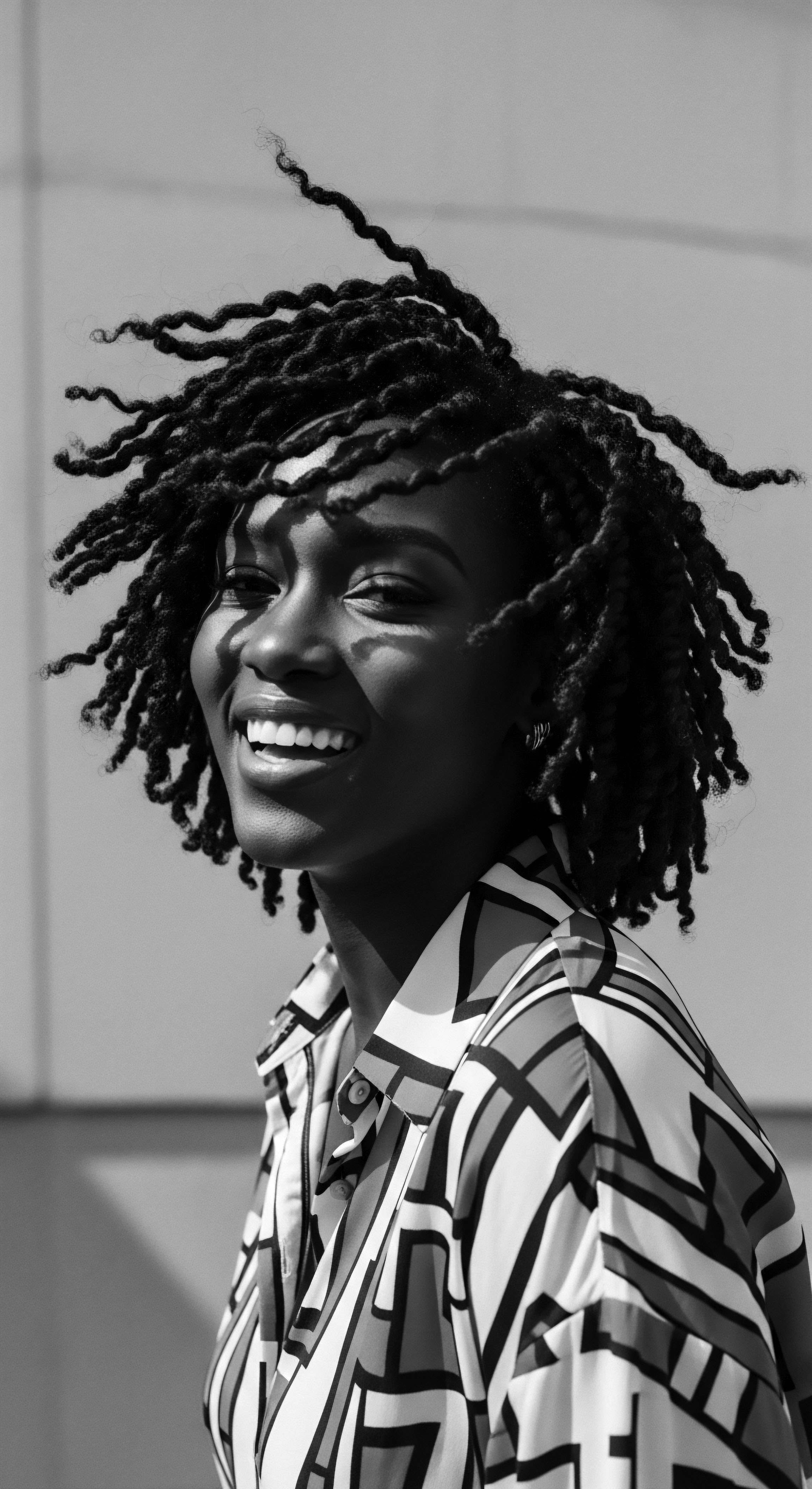
Ancestral Wisdom and Modern Science in Hair Care
The practices of our forebears were often deeply intuitive, born from observation and generations of accumulated knowledge. They understood the importance of natural elements for hair health, long before modern chemistry could isolate their active compounds. For instance, traditional African communities utilized plant-based oils, butters like shea, and various herbs for their moisturizing, cleansing, and protective properties. These ingredients addressed concerns ranging from dryness to scalp irritation, often working in synergy with the hair’s natural composition.
Today’s accessible hair science often validates these long-standing traditional practices. We now understand that the unique helical structure and lower density of follicles in textured hair contribute to its distinct needs, particularly regarding moisture retention and breakage vulnerability. Scientific inquiry confirms the benefits of humectants and emollients found naturally, affirming the ancestral emphasis on nourishing the hair and scalp. The resurgence of interest in plant-based ingredients in modern hair care products, tailored for textured hair, reflects a renewed appreciation for these ancient solutions.

The Nighttime Sanctuary and Bonnet Wisdom
Among the most enduring and universally adopted customs for textured hair is the practice of nighttime protection. The seemingly simple act of wrapping hair or covering it with a bonnet has roots stretching back centuries, adapted from traditional headwraps and their various cultural uses across Africa and the diaspora. These coverings originally served multiple purposes ❉ to protect the hair from dust and the elements, to signify marital status or religious observance, and to maintain elaborate styles for extended periods. The Tignon Laws of 18th-century Louisiana, for instance, forced Black women to cover their hair, paradoxically transforming an oppressive measure into a symbol of pride and creativity as women adorned their headwraps with artistic flair.
The modern bonnet and silk or satin scarf serve a singular yet vital purpose ❉ to minimize friction, retain moisture, and preserve the integrity of styled hair during sleep. Friction against cotton pillowcases can lead to dryness and breakage of delicate strands. The smooth surface of silk or satin creates a protective barrier, allowing hair to glide freely, thereby reducing tangles and preserving curl patterns. This continued ritual, whether consciously linked to historical context or not, is a direct inheritance of ancestral wisdom that prioritized hair preservation and mindful care, contributing significantly to a deep sense of cultural pride.

What Ingredients Do Ancestral Practices Still Offer?
Traditional hair care was deeply intertwined with the local flora and fauna, yielding a pharmacopoeia of natural ingredients. Many of these continue to be recognized for their benefits today.
- Shea Butter (Butyrospermum Parkii) ❉ Sourced from the nuts of the African shea tree, shea butter has been used for centuries across West Africa for its moisturizing and emollient properties. It helps seal in moisture, reduce frizz, and condition the hair shaft, making it invaluable for textured hair’s tendency towards dryness.
- Coconut Oil (Cocos Nucifera) ❉ Popular in many tropical regions, including parts of East Africa, coconut oil can penetrate the hair shaft, reducing protein loss and providing deep conditioning, a practice noted in historical accounts of hair care.
- Aloe Vera (Aloe Barbadensis Miller) ❉ Used in ancient Egypt and other African cultures for its soothing and healing properties, aloe vera gel offers hydration and anti-inflammatory benefits for the scalp, supporting overall hair health.
- Baobab Oil (Adansonia Digitata) ❉ From the ‘Tree of Life’ found across the African savanna, baobab oil is rich in omega fatty acids, providing nourishment and promoting elasticity, reflecting ancestral knowledge of resilient plant sources.
These ingredients, once part of daily care regimens, now hold a renewed status as foundational components of natural hair products, bridging ancient wisdom with contemporary scientific understanding.

Solving Hair Challenges Through a Heritage Lens
The journey of textured hair has often been marked by challenges, from environmental stressors to the societal pressures of assimilation. Historically, addressing issues like dryness, breakage, or scalp conditions relied on locally available remedies and generational knowledge. The transition through slavery and colonialism introduced severe disruptions, with enslaved individuals often denied access to proper tools and ingredients, leading to matted and unhealthy hair. The subsequent emphasis on chemically altering hair to conform to Eurocentric beauty standards further compounded these issues, leading to widespread damage and hair loss.
In the face of these historical adversities, the act of maintaining textured hair became a form of resistance and self-preservation. The natural hair movement, particularly in the 2000s, sparked a significant cultural shift, encouraging Black women to abandon relaxers and pressing combs, instead learning to care for their innate textures. This movement is not just a trend; it represents a profound return to a healthier lifestyle, a more authentic existence, and a redefinition of beauty rooted in self-acceptance and cultural pride.
A 2020 study by Michigan State University and Duke University found that Black women with natural hairstyles were perceived as less professional and less likely to receive job interviews than white women or Black women with straightened hair. Despite such systemic challenges, the resolve to honor natural hair perseveres. The ongoing advocacy for legislation such as the CROWN Act (Creating a a respectful and Open World for Natural Hair), which prohibits race-based hair discrimination, underscores the enduring struggle for recognition and respect for textured hair in professional and educational settings. This collective effort to challenge discriminatory norms is a powerful expression of cultural pride, built upon the enduring legacy of ancestors who, too, asserted their identity through their hair.
The regimen of radiance for textured hair is a living testament to heritage, a dynamic interplay between ancestral wisdom and modern insights. It is a conscious choice to honor the past, to tend to the present, and to shape a future where every strand stands tall, imbued with dignity and pride.
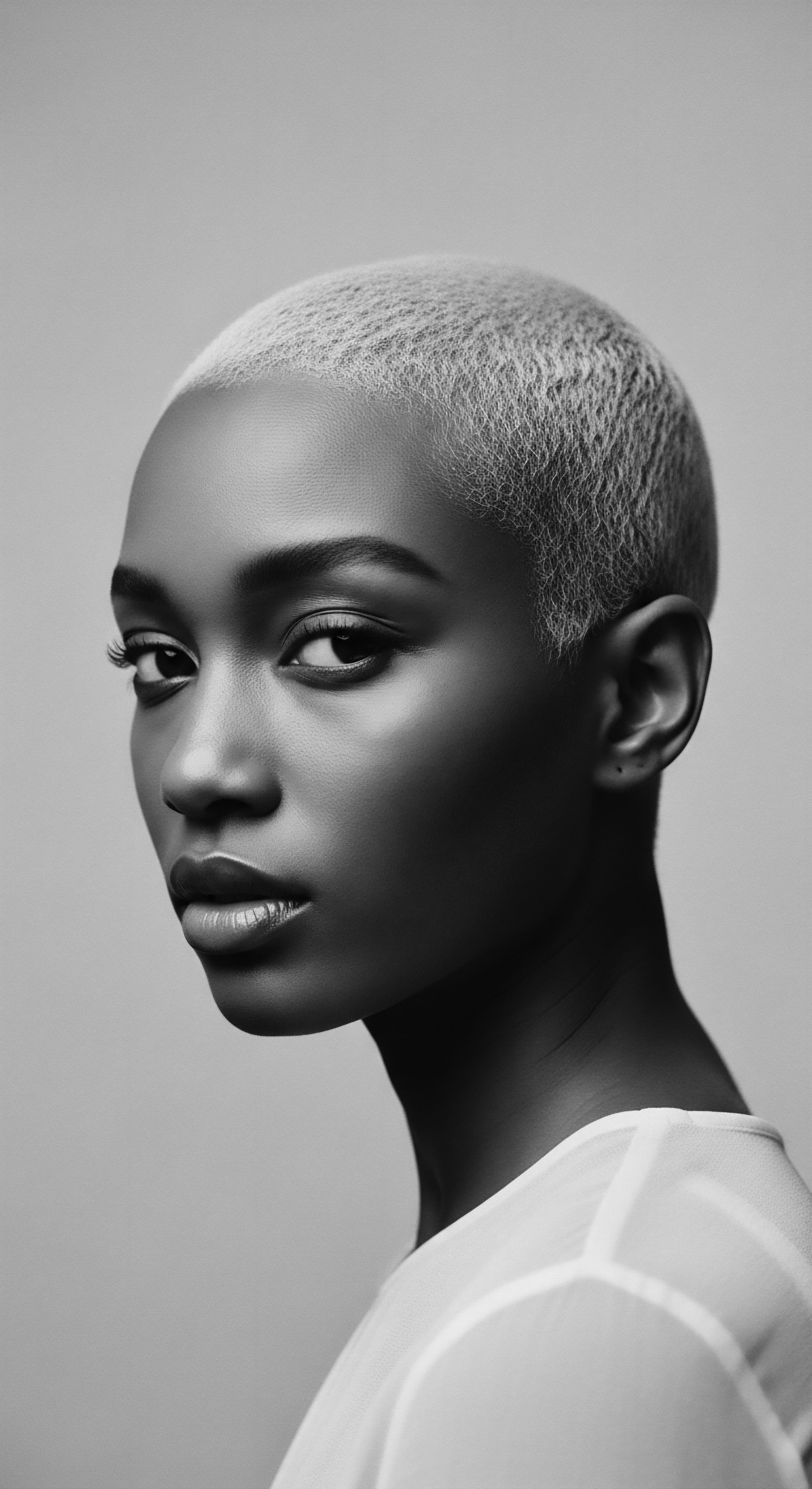
Relay
The journey of textured hair from its ancient roots to its modern manifestations is one of enduring cultural resilience, a profound affirmation of self. This exploration moves beyond mere historical review, drawing on research and insights to underscore the complex interplay of biology, custom, and societal influence. How does the legacy of hair customs contribute to present-day cultural pride for textured hair? It acts as a continuous relay, transmitting deeply embedded values and practices that empower individuals to reconnect with their lineage and assert their identity in a world often seeking to erase it.

The Science of Textured Hair ❉ A Heritage Perspective
From a scientific lens, the distinct characteristics of textured hair – its varying curl patterns, from broad waves to tightly coiled kinks – are a marvel of genetic adaptation. The elliptical shape of the hair follicle, coupled with the way the hair shaft grows in a helical fashion, contributes to its unique strength and vulnerability. This inherent structure, a gift of our ancestral lineage, means textured hair often presents specific needs, such as increased susceptibility to dryness and breakage due to fewer cuticle layers and more exposed edges along its curves. (Byrd and Tharps, 2001).
Early understanding of this biology, though not formalized in scientific terms, guided ancestral care. They understood that the hair needed moisture, protection, and gentle handling. The use of natural oils, plant extracts, and intricate styling minimized exposure to harsh elements, implicitly addressing these structural requirements. This profound, intuitive knowledge forms a critical part of the legacy, a testament to human ingenuity in harmony with nature.

Diasporic Hair Traditions ❉ A Continuous Evolution
The forced migration of the transatlantic slave trade profoundly altered the landscape of hair customs, yet the underlying principles of heritage persisted, adapted, and sometimes went underground. Stripped of traditional tools and ingredients, enslaved Africans still found ways to maintain hair customs, often using rudimentary implements like sheep fleece carding tools for untangling hair, or covering their hair with head rags on weekdays. This resilience speaks volumes about the intrinsic value placed on hair, not just for appearance but as a tangible link to a lost homeland and a means of cultural preservation.
The 1960s witnessed a powerful resurgence with the “Black Is Beautiful” movement, consciously rejecting Eurocentric beauty norms and celebrating natural hair, notably the Afro, as a symbol of Black power and rebellion. This period was a direct reclamation of heritage, transforming hair into a political statement. Decades later, the early 2000s ushered in a second wave of the natural hair movement, fueled by social media platforms like YouTube and blogs, allowing Black women globally to share knowledge, techniques, and personal hair journeys. This digital relay fostered a renewed sense of community and collective pride, dismantling long-held assimilationist ideologies.
The impact of this movement is quantifiable ❉ between 2011 and 2016, spending on perm relaxers saw a significant decline of 30.8 percent, with projections suggesting relaxers would become the smallest market segment by 2020. This shift represents more than a change in consumer habits; it signifies a widespread cultural awakening and an economic reorientation towards products that cater to, and celebrate, natural textured hair. This financial pivot further underscores the tangible power of embracing ancestral traditions and the market’s response to a community’s renewed pride.

How Do Hair Customs Bolster Present-Day Identity?
The connection between historical hair customs and present-day pride is multi-layered, extending beyond personal aesthetics into the realms of social justice and collective identity. Hair, for many Black and mixed-race individuals, is not merely a collection of protein strands; it carries the weight of history, the joy of cultural continuity, and the ongoing struggle against systemic discrimination. The legacy of hair customs provides a framework for understanding contemporary challenges, such as workplace discrimination and school policies that disproportionately target natural hairstyles.
A concrete example of this systemic challenge and the prideful resistance it sparks is seen in the ongoing fight for legislation like the CROWN Act. This act, which stands for “Creating a Respectful and Open World for Natural Hair,” seeks to prohibit race-based hair discrimination, recognizing that denying opportunities based on hair texture or style is a form of racial bias. While some states have successfully passed this legislation, the struggle for nationwide protection continues, revealing how deeply ingrained biases remain. The continuous advocacy for such laws is a direct echo of ancestral defiance, a contemporary battle fought on the grounds of self-acceptance and the right to embody one’s heritage without fear of reprisal.
The pride derived from these customs is also deeply communal. Hair braiding sessions, once vital social gatherings in ancestral Africa, continue to be moments of bonding and cultural transmission, even in modern settings. Mothers and daughters share not just styling techniques, but stories, advice, and a sense of shared identity, perpetuating traditions that have spanned continents and centuries.
This intergenerational sharing ensures that the knowledge, artistry, and symbolic power of textured hair customs are not lost but rather continuously revitalized, contributing to a vibrant, living heritage that serves as a cornerstone of present-day cultural pride. This enduring practice, the act of tending to each other’s hair, creates a powerful feedback loop, strengthening family ties and affirming cultural worth.

Reflection
The narrative of textured hair, from the ancient lands where it first flourished to the complex tapestry of today’s global communities, is a profound testament to the enduring power of heritage. Each coil, each strand, each carefully sculpted style, carries within it the whisper of countless generations, a living archive of wisdom, resistance, and boundless creativity. Roothea’s own ethos, the ‘Soul of a Strand,’ finds its deepest meaning in this continuous dialogue between past and present, recognizing that true beauty resides not just in outward appearance, but in the profound connection to one’s ancestral lineage.
The pride that radiates from textured hair today is a deeply felt recognition of this legacy, a quiet revolution of self-acceptance that honors the journeys of those who came before. It is a powerful affirmation that our history is quite literally woven into the very fabric of our being, a story told in every twist and turn of our natural crowns.
References
- Byrd, Ayana D. and Lori L. Tharps. Hair Story ❉ Untangling the Roots of Black Hair in America. St. Martin’s Press, 2001.
- Fletcher, Joann. Ancient Egyptian Hair ❉ A Study of Its Production, Arrangement, and Significance. University of Manchester, 1995.
- Seals Allers, Kimberly. The Mocha Manual to a Fabulous Pregnancy. Amistad, 2006.
